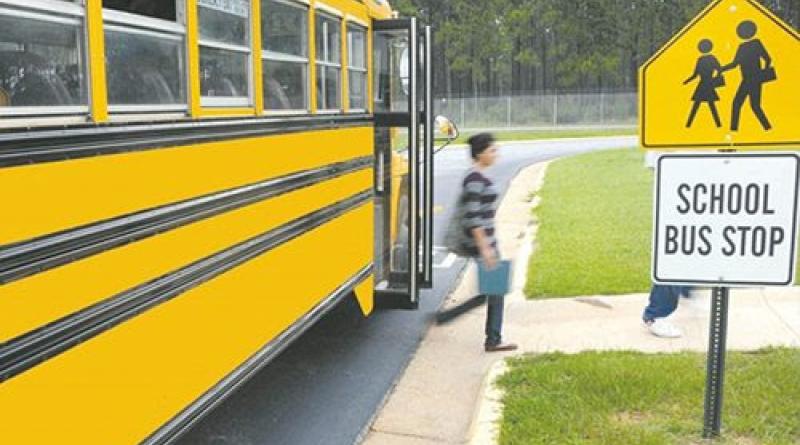‘Iconic Yellow School Bus’ Can Shield Child Health, Cut Emissions with Shift to Electric

Focused pilot programs and supportive policies will enable Ontario to transition its fleet of more than 20,000 school buses from diesel to electric power for big environmental gains, healthier and happier school children, and substantial economic development.
The “iconic yellow school bus,” a symbol of childhood, education, and community, is also a source of harmful emissions that cause serious human health impacts and contribute to climate change, writes Pollution Probe in its recently published Electric School Bus Strategy for Ontario.
Co-authored by the Canadian Partnership for Children’s Health and Environment and the Delphi consulting group, the report offers the Ontario government a host of reasons—and a comprehensive strategy—to replace diesel school buses with electric ones.
Foremost are the profound health harms of diesel exhaust, with Health Canada and the World Health Organization identifying the fumes are “a human carcinogen”, with fine particulate matter (PM2.5) posing grave health risks “at all levels of exposure.” Ontario’s fleet of approximately 20,833 school buses produces 8,100 kilograms of particulate matter annually—with effects on breathing, heart, and blood functions.
Diesel exhaust has also been linked to heart and lung disease, central nervous system damage, immunological effects, and reproductive and developmental harms. Children, the elderly, and asthmatics are understood to be “at much greater risk” within a generally threatened population.
The impact on K-12 education is considerable, with traffic pollution estimated to cause more than 2.2 million days of acute respiratory symptoms, more than 170,000 days of asthma symptoms, and more than 3,000 episodes of acute childhood bronchitis each year.
Emissions reductions from switching to electric school buses (ESBs) would bring Ontario “over C$7.2 million in health benefits every year,” Pollution Probe says. It would also eliminate roughly 307,705 tonnes of carbon dioxide equivalent annually—and signal to Ontario’s youth and children that the adults around them are working to solve the climate crisis.
“By replacing dirty diesel buses, ESBs can become a visible icon for children’s health protection and a tangible example of climate action in our day-to-day lives,” the organization states.
The economic case is also strong. “Given Ontario’s comparative advantages within the EV supply chain, there is a valuable opportunity for Ontario to capture a piece of the growing ESB market,” Pollution Probe writes. Ontario “has all of the necessary ingredients” to develop its ESB manufacturing capacity, “including an abundance of the minerals required to produce batteries, growing battery manufacturing and recycling sectors, leading automotive research programs, an existing talent pool of skilled labour, and well-established distribution channels to major North American and global markets.”
Plus, the C$16 billion in new investments being made by EV manufacturers in Canada “will translate into more than one-quarter of a million jobs,” with the accompanying battery supply chain expected to create tens of thousands of additional jobs.
But the province cannot make good on this financial opportunity without an ESB strategy designed to address knowledge gaps, capital costs, and a dearth of training and retraining programs, the report says.
It calls on the Ontario government to fund pilot programs “to assess operational performance and cost” of ESBs, particularly in winter, and look into vehicle-to-everything (V2X) integration.
“School buses are well-suited for V2X, as they remain idle for a significant portion of the day, have extremely predictable and consistent duty cycles, and in a large majority of circumstances are parked at depots by 5 PM—when the evening period of peak electricity usage begins.” Those factors could make ESB batteries a source of electricity to balance the grid and reduce peak power demand that Ontario is currently planning to supply with natural gas.
The average cost of an ESB runs from $330,000 to $375,000, compared to $100,000 for diesel, but prices are expected to fall as manufacturing capacity increases and producers begin to achieve economies of scale—especially where batteries are concerned. To boost ESB adoption, the report says Ontario should eliminate provincial sales tax for new ESB purchases, provide grant funding for procurement that is stackable with the federal Zero Emissions Transit Fund, and make low-interest financing available to fleet operators. Pollution Probe further urges the province to “prioritize support for ESB acquisition in marginalized communities and those facing high burden of transport-related air pollution (TRAP) exposure.”
The report also recommends resource guides and best-practice toolkits to help out with the “steep learning curve” that may be ahead for school boards and school bus operators, along with subsidized or free training and retraining programs for drivers, mechanics, and school district staff.
PHOTO/Pxhere





